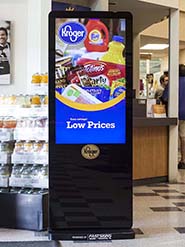

This is easily one of the most effective leadership styles since it allows employees to have a voice. The authoritarian leadership style, also referred to as autocratic leadership, is a style in which the leader ultimately exerts all the power. Autocratic leaders take individual control over any decisions with little or no input from others. These leaders tell others what to do, how to do it, and when it should be done. Though it’s not optimal, this leadership technique can be beneficial when necessary. For example, it is beneficial when the team needs direction, a course correction, when deadlines are tight, or when decisions need to be made quickly.
As well as adapting your style to different situations, you should also be sensitive to the motivations, needs and personalities of individual team members. It can be hard to be objective about your own leadership style and how well it is working, so seeking out constructive feedback is a good idea. This can be quite revealing in terms of how you might adapt or fine tune your leadership styles.
Once the person in power leaves their official position, their authority is lost. Those who govern have a legal right to do so, and subordinates accept this legal authority. Weber believed that traditional authority creates and preserves inequalities. If this authority is not challenged, the leader will stay in power indefinitely. In this form of domination, subordinates accept the type of authority.
Enrolling in an advanced degree program is one highly effective way to gain leadership skills to grow your career. An MS in Leadership can arm you with the knowledge, frameworks, and skills to cultivate a personal leadership philosophy. Through real-world lessons, you can build and strengthen your leadership capabilities. Choosing a leadership style that works for you can make you a more effective leader. Whether you manage a large or small team, your leadership style heavily impacts how your team sees you. We’ve likely all been in a group situation where someone took control, communicating with the group and creating a shared vision.
George Washington was a leader who was famous for his democratic focus. Medical and high-tech industries fit well with a democratic leadership style because they require a high amount of collaboration to function. The phrase most illustrative of a Coaching Leadership style is “What else could you try? Today’s leadership and management training and education mainly refer to a framework of seven primary leadership styles. Al., has written extensively about the concept of emotional intelligence in business, and he and his team review six emotional leadership styles in their book Primal Leadership. Theorists believe that leadership is a function influenced by the leader, the followers, and the situation.
The benevolent autocrat who relies mainly on positive influences uses the reward and incentives in directing his subordinates towards the organisational goals. By using praise and pats on the back he secures the loyalty of subordinates who accept his decisions. Include examples of the pronounced leaders been it present or past.
Differences Between Power and Authority
Leaders may adjust their style of leadership to fit certain tasks, groups, or settings. The main advantage of an autocratic leader is streamlined work that improves efficiency and productivity. They create firm deadlines and have a very clear set of expectations. This is ideal in a time of crisis describe various leadership styles based on the use of authority or when last-minute decisions are needed. This leadership style allows for fewer misunderstandings as directions are passed down. Authoritarian leaders, also known as autocratic leaders, provide clear expectations for what needs to be done, when it should be done, and how it should be done.
- Still, Lewin’s studies were influential in establishing a starting point for this kind of research.
- By taking into account the opinions of subordinates, leaders can prevent any potential conflicts while maintaining both healthy relationships and peaceful work environments.
- They weren’t quite as productive as the children in the authoritarian group, but their work was a higher quality.
- Employees get to provide feedback and opinions through channels like monthly town hall meetings, anonymous staff surveys, or daily stand-ups in the office.
As a leader, it requires focusing on understanding the people you are working with and developing their abilities, while also setting a good example and understanding their personal goals. The authoritative leadership style relies heavily on getting to know each team member. This allows a leader to provide guidance and feedback on a more personalized level, helping individuals to succeed. This means authoritative leaders need to be able to adapt, particularly as the size of their team grows. A leadership style refers to a leader’s methods, characteristics, and behaviors when directing, motivating, and managing their teams. A leader’s style is shaped by a variety of factors, including personality, values, skills, and experiences, and can have a significant impact on the effectiveness of their leadership.
But encouraging innovation isn’t as prevalent with this type of leadership style. Leadership styles refer to the behavioral approach employed by leaders to influence, motivate, and direct their followers. This leadership style is the most effective, but it does have some potential downsides. For example, in some instances, group members may not have the necessary knowledge or expertise to make a quality decision or contribution to the decision-making process.
A co-founder with a flair for the spotlight is essential if you like dealing with people personally but are afraid of public speaking. Strong intuition is an exceptional asset of situational leaders. These leaders can quickly adapt and improvise in a highly competitive marketplace because they have accumulated years of experience and instinct. Situational leaders endure the test of time because they know what leadership style to adopt, make the right call when it matters, and grab opportunities. A pacesetting leader’s role is to keep moving forward as others strive to keep up, like a runner in an Olympic track race. Sometimes called “trailblazing leadership,” leaders that use this approach can build high-performing teams in any business.
Courses on Leadership Category
Middle managers, small teams, and consultants benefit most from this leadership style. Most company CEOs and founders must also become coaches to maximize their employees’ potential. For instance, in the absence of an experienced marketing coordinator, leaders can coach their employees to become marketing managers. The main benefit of this leadership style is that it turns underperforming employees into high-achievers.

Basically, if people won’t just do what you tell them to based on the title you hold or your position , you have to develop other types of authority. Leadership Team Meet the leadership that’s passionate about empowering your workforce. If we look at it from the perspective of a true leader, then each of these four aspects is inherent in that position. However, they can be independent of each other and reside in someone by themselves, or with a mixture of all four. 86% of businesses worldwide say developing new leaders is their organization’s #1 challenge—and only 15% are confident in their current leadership pipelines.
Disadvantages of autocratic leadership
These work well in some situations, and we are going to look at how different styles might be appropriate for your organisation. This technique is one of the best leadership styles to adopt when you have an inexperienced development team that requires continuous supervision. You will also need to make the decisions while providing guidance.
Regardless of your team’s size, your leadership style is critical to your team’s cohesion and ability to accomplish corporate objectives. Influential leaders often have multiple “leadership traits,” such as creativity, inspiration, foresight, and empathy. On the other hand, the most impactful leaders are flexible enough to use a variety of leadership styles to meet different challenges. You can lead better and collaborate if you know your dominating leadership qualities and blind spots. Hiring a freelance project manager is a smart move if you are an excellent visionary yet lack organizational skills.
Authoritative leadership
The leader guides and protects his subordinates as members of his family. I now know what of leadership style I follow, before I did not have a name attached to it. This kind of leadership style could possibly the Autocratic leadership. That is possibly because the chief might have an egoistic attitude towards other villagers and somehow think of himself highly of others. He is more likely practice the old saying “my way or the highway”. Affiliative Leaders recognise and reward the personal characteristics and behaviours used to carry out tasks as much as the delivery of the task itself.
These are the key types of authority and authority examples in modern society. In the past, legal authority systems have often developed in opposition to traditional authority. Authority is the right to assign tasks and responsibilities, allocate and direct resources, make decisions, and enforce compliance. Care™ Drive productivity through sustained well-being and mental health for all employees with BetterUp Care™. Unlock insights from industry leaders to transform your workforce.
Making Sense of Leadership Styles
Disagreements between team members can result in the decision-making process being time-consuming and unproductive for the democratic leader and their team. Authoritarian leaders are individuals who take full control of their team and makes all of the decisions with little input from anyone else. However, this constant pushing towards an ambitious goal can result in employee burnout. Constant motivation is required to see teams through tough times, and even then, a transformational leader could unintentionally cause too much competitiveness among their team. Employees who work for a democratic leader are aware that they’re part of a larger team.
The results revealed that a manager’s leadership style was responsible for 30% of the company’s bottom-line profitability. The style of leadership that uses legitimate power can be classified as democratic leadership. Undertaking a leadership development program will ensure that leaders keep themselves updated and are capable of switching to other leadership styles according to the prevailing circumstances. This is a very common leadership style today based on the action-and-reward concept.
Here, we do not need to isolate a great leader; we can look at just about any policeman or fireman and say they have authority. When a policeman tells you do to something, you usually comply, as he is in a position of authority. The truth is most managers are in a position of authority; what differs is just how they use it. That is because with authority, a person has the right to give you an order or direction. Taking a moment to look at this will help us frame out the difference in power, leadership, authority and influence.
Unlike the autocratic style, this leadership is centered on subordinates’ contributions. The democratic leader holds final responsibility, but he or she is known to delegate authority to other people, who determine work projects. According to Research by asaecenter, leadership style is the way a person uses power to lead other people. Research has identified a variety of leadership styles based on the number of followers. The most appropriate leadership style depends on the function of the leader, the followers and the situation.
Autocratic leadership works best in situations where quick decisions are needed, such as turning around a failing organization. Autocratic leadership is centered around and focused on the leader. With this style of leadership, all of the decision-making resides with the leader, and decisions are made by the leader without consulting subordinates. There are many different styles of leadership, and understanding which type you are will make you better equipped to avoid the common pitfalls of that particular style. The bureaucratic leadership style puts the needs of the company first and relies on stringent rules being in place for all team members to follow. There are similarities to participative leadership here, in that employees are valued for their opinions and decisions are made somewhat collectively.
